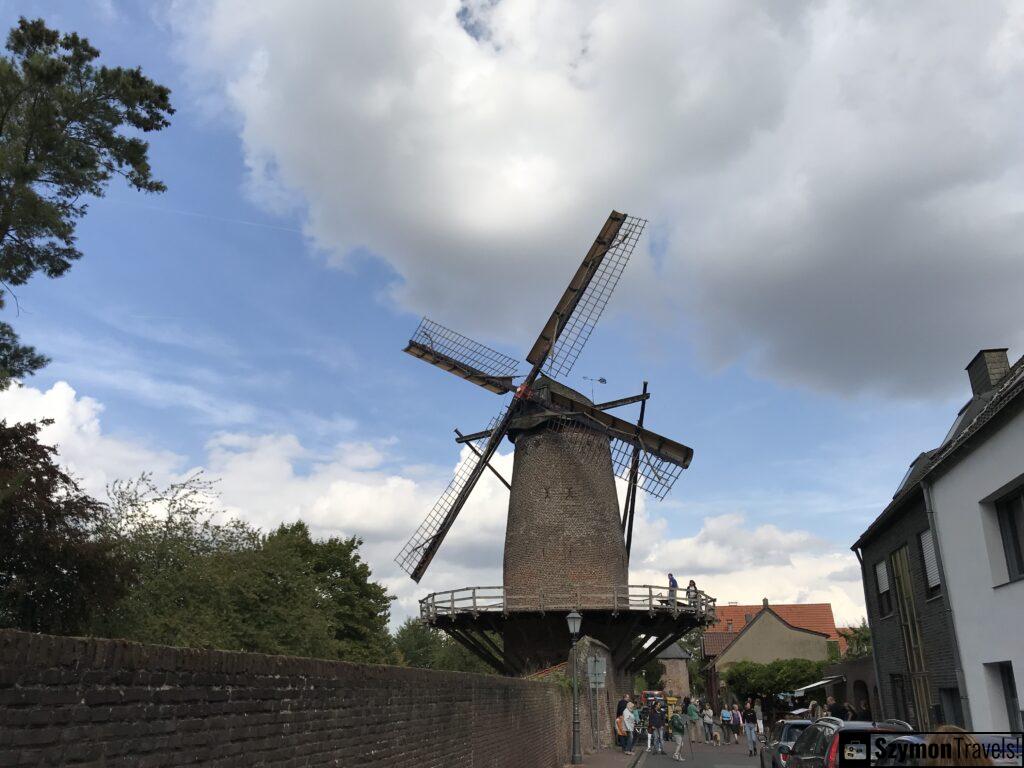
Xanten is a small town located in the northwest of Germany, in the state of North Rhine-Westphalia. It is situated on the banks of the River Rhine, and is known for its well-preserved Roman ruins, including the remains of the Roman settlement of Colonia Ulpia Traiana.
Rated by Szymon
4.0 out of 5.0 stars
Xanten, Siegfried and the Dragon
According to the legend, Siegfried, a heroic dragon slayer, traveled to Xanten to defeat a fearsome dragon known as the Lindwurm. The dragon had been terrorizing the region, causing havoc and destruction. Siegfried, armed with his legendary sword and a suit of invincible armor, faced the beast in a fierce battle.
During the fight, Siegfried managed to mortally wound the dragon, but he also received a small scratch from the creature’s venomous fang. Unbeknownst to Siegfried, this small wound would prove to be his undoing later in the story.
After slaying the dragon, Siegfried became a celebrated hero in Xanten and was hailed by the townspeople. However, the story takes a tragic turn when Siegfried is betrayed by his own comrades. Jealous of his fame and glory, they conspire against him.
As Siegfried bathes in the nearby River Rhine to wash off the dragon’s blood, one of his companions, Hagen, fatally strikes him in the back, targeting the vulnerable spot where Siegfried was scratched by the dragon’s fang. This betrayal leads to Siegfried’s untimely death, causing great sorrow and mourning in Xanten.
The story of Siegfried and the dragon has become intertwined with Xanten’s history and folklore, and the town pays homage to this legend in various ways. Visitors can explore the Siegfried Fountain, which depicts the heroic dragon slayer, and witness theatrical performances and reenactments of the legend during festivals and cultural events.
Map
Xanten TOP Lis

The artwork features three life-sized bronze figures, depicting two women and a young girl gathered around a traditional water pump. It represents a scene from the past when the pump served as a communal water source. The sculpture pays homage to the historical importance of water and the vital role it played in daily life.
The “Frauen an der Wasserpumpe” sculpture is admired for its artistic detail and serves as a symbol of community, cooperation, and the shared history of the town. It has become a popular spot for visitors to take photographs and serves as a unique and memorable attraction in Xanten.
The sculpture “Frauen an der Wasserpumpe” in Xanten was created by the German artist Wolfgang Kreutter. Wolfgang Kreutter is a renowned sculptor known for his figurative bronze sculptures that often depict everyday life scenes. He has created various public artworks and sculptures that can be found in different cities and public spaces in Germany.
- History: Xanten has a significant historical background dating back to Roman times. It was once a bustling Roman settlement known as Colonia Ulpia Traiana. The remains of the ancient Roman city can be found in the nearby Archaeological Park Xanten, which includes a reconstructed Roman city, amphitheater, and other fascinating structures.
- Medieval Heritage: Beyond its Roman past, Xanten boasts a well-preserved medieval town center. Strolling through its narrow streets, you’ll encounter beautiful half-timbered houses, charming squares, and the Gothic St. Victor’s Cathedral, which dominates the skyline with its imposing presence.
- Xanten Cathedral Chapter: The Xanten Cathedral Chapter, also known as Dom St. Viktor, is a renowned religious institution in the town. It is associated with the historic Xanten Cathedral and serves as a significant cultural and spiritual center.
- Market Square: Xanten’s Market Square, known as Marktplatz, is the vibrant heart of the town. It features a variety of colorful buildings, cafes, and shops. The square is a popular gathering place and hosts regular markets and festivals.
- Leisure Activities: The town is surrounded by beautiful natural landscapes, including the Lower Rhine region and the picturesque Xanten North Sea. These areas offer ample opportunities for outdoor activities such as hiking, cycling, and water sports.
- Cultural Events: Xanten hosts a range of cultural events throughout the year, attracting visitors from near and far. Festivals, concerts, theater performances, and art exhibitions contribute to the town’s lively cultural scene.
- Gastronomy: Xanten is known for its culinary delights. Traditional German cuisine can be savored in local restaurants, and the town also offers a variety of international dining options.
- Tourism and Hospitality: Xanten has a well-developed tourism infrastructure, including a range of accommodations ranging from cozy guesthouses to modern hotels. Visitors to the town can explore its historical sites, enjoy leisure activities, and immerse themselves in the local culture.
Gallery




Some information comes from these sources:
This article uses material from the Wikipedia article https://en.wikipedia.org/wiki/Xanten, which is released under the Creative Commons Attribution-Share-Alike License 3.0.
